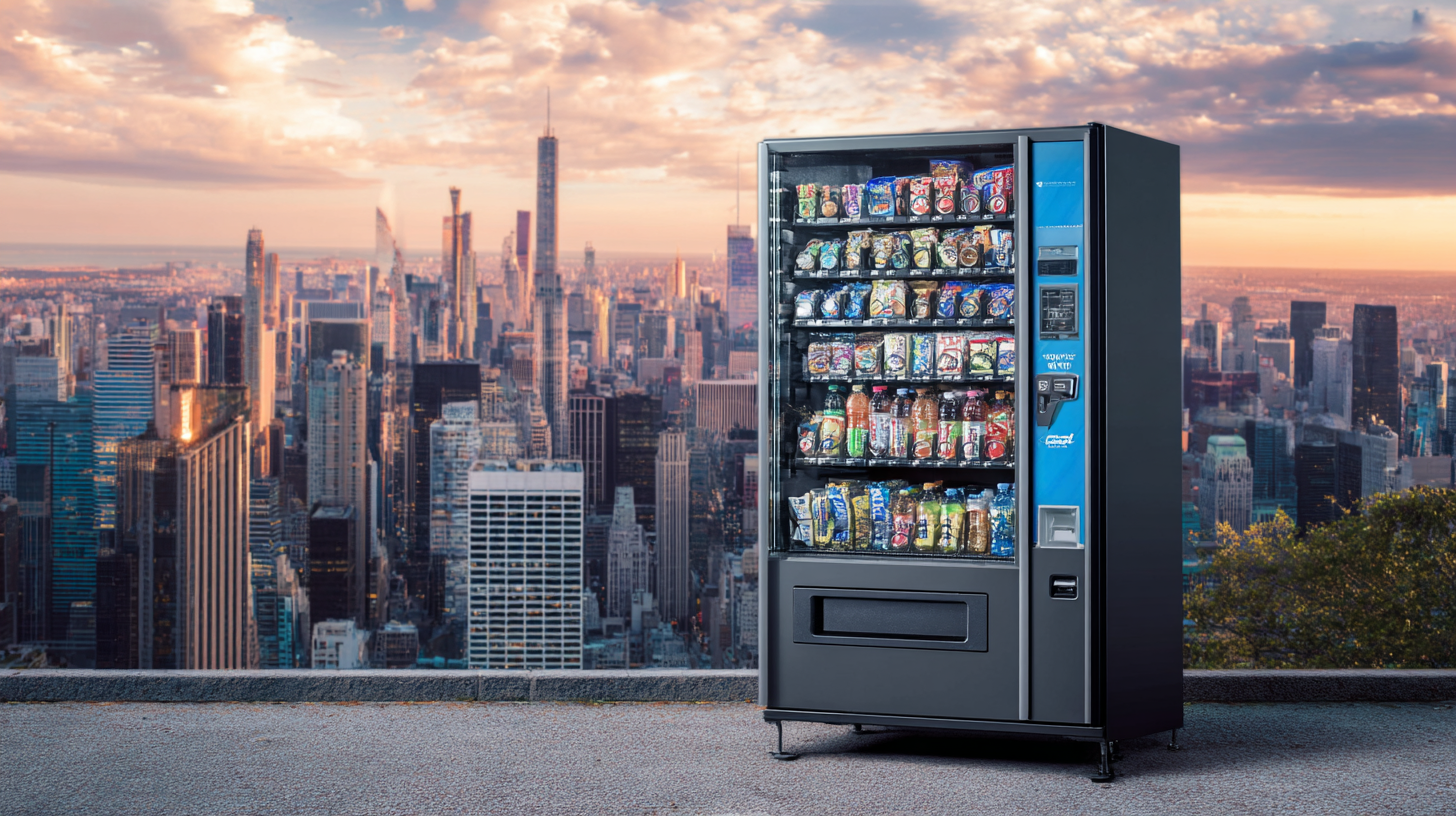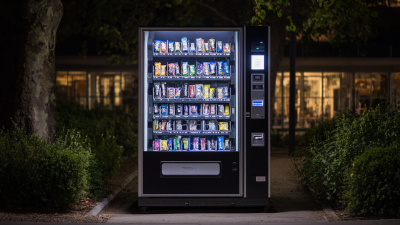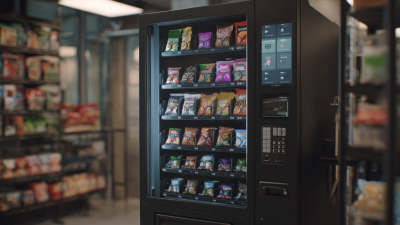Unlocking the Secrets of the Vending Business with 5 Key Strategies for Success in 2024
As we step into 2024, the vending business continues to demonstrate its resilience and adaptability in a rapidly evolving market. According to IBISWorld, the vending machine operators industry in the United States is projected to reach $7 billion in revenue, showcasing a steady annual growth rate of 2.3% over the next five years. The increasing demand for convenience, coupled with technological advancements such as cashless payment systems and smart vending machines, is reshaping consumer expectations and behaviors. Moreover, a recent survey revealed that 58% of consumers prefer to buy snacks and beverages from vending machines due to their accessibility and quick service. This article will explore five key strategies for success in the vending business, empowering operators to leverage these trends and unlock new opportunities for profitability in the coming year.

Identifying High-Demand Locations for Vending Machines: A Strategic Approach
Identifying high-demand locations for vending machines is critical to achieving success in the vending business, especially in 2024. According to a report by IBISWorld, the vending machine industry has seen a consistent growth rate of 2.5% per year, indicating a robust market that continues to expand. To capitalize on this trend, operators must strategically place their machines in locations where foot traffic is high and demand for convenience is paramount. Areas such as office buildings, hospitals, and universities have proven to be lucrative spots, as these venues host large groups of people seeking quick and easily accessible snacks and beverages.
Moreover, a survey conducted by the Vending Times indicated that over 65% of consumers prefer vending machines over traditional retail for on-the-go snacks. This preference underscores the importance of identifying locations that cater specifically to busy professionals and students. Placing machines in gyms, transit stations, and event venues can attract a steady stream of customers. Operators should conduct market research to analyze foot traffic trends and consumer preferences in their target areas, using data analytics tools to make informed decisions about which locations can yield the highest returns.
Unlocking the Secrets of the Vending Business: Key Strategies for Success in 2024
| Location Type | High Demand Factors | Potential Revenue ($/month) | Ideal Product Mix |
|---|---|---|---|
| Office Buildings | High foot traffic during work hours | $600 | Snacks, Coffee, Beverages |
| University Campuses | High student population, 24/7 activity | $800 | Energy drinks, Snacks, Instant noodles |
| Hospitals | Consistent visitor flow, long waiting times | $750 | Healthy snacks, Drinks, Meals |
| Shopping Malls | High shopper foot traffic, diverse demographics | $900 | Seasonal snacks, Beverages, Mobile chargers |
| Gyms | Health-conscious population, post-workout refreshments | $500 | Protein bars, Supplements, Electrolyte drinks |
Choosing the Right Products to Maximize Sales and Customer Satisfaction
In the competitive arena of vending machine operations, selecting the right products is essential for maximizing both sales and customer satisfaction in 2024. Recent studies indicate that 59% of consumers throw away items from vending machines when their preferences aren't met, highlighting the importance of tailored product offerings. Operators must prioritize popular items such as healthy snacks and beverages, as the demand for nutritious options continues to surge. According to a 2023 report from IBISWorld, sales of healthy snacks in vending machines have grown by over 15% annually, reflecting a shift in consumer behavior towards healthier choices.
Moreover, understanding the target demographic can significantly enhance product selection. For instance, a National Automatic Merchandising Association (NAMA) report revealed that nearly 74% of millennial consumers prefer vending machines that offer local or artisan products. This trend underscores the need for operators to adapt their product lines to reflect local tastes and societal trends. By integrating such insights and continuously updating their offerings, vending machine businesses can not only boost revenue but also foster a loyal customer base in an evolving marketplace.
Unlocking the Secrets of the Vending Business: Sales by Product Category in 2024
This chart illustrates the projected sales for different product categories in the vending business for 2024. Focusing on high-demand products such as Snacks and Beverages can significantly enhance customer satisfaction and overall sales performance.
Leveraging Technology for Streamlined Operations and Inventory Management
In 2024, leveraging technology is essential for the success of the vending business, particularly in streamlining operations and inventory management. The integration of Artificial Intelligence (AI) in warehouse management stands out as a significant trend, influencing how businesses operate. According to recent analyses, the global AI market in logistics and supply chain is poised to reach a value of $20.1 billion by 2024, with a projected growth rate of 25.9% from 2025 to 2034. This rapid expansion highlights the increasing demand for real-time supply chain visibility, route optimization, and predictive inventory management.
Moreover, the Internet of Things (IoT) is transforming inventory optimization strategies within the vending industry. With advancements in IoT technology, businesses can implement efficient asset tracking methods and data-driven inventory management systems. Reports indicate that the IoT in warehouse management market is experiencing substantial growth, emphasizing the impact of these technologies on operational efficiency. By embracing these innovative solutions, vending operators can not only enhance their inventory accuracy but also improve service delivery, thereby gaining a competitive edge in a crowded marketplace.

Implementing Effective Marketing Strategies to Increase Visibility and Engagement
In the evolving landscape of the vending business, implementing effective marketing strategies is crucial for increasing visibility and engagement in 2024. According to a report by IBISWorld, the vending machine industry is projected to grow at an annual rate of 1.5% through 2024, indicating a steady demand that entrepreneurs can capitalize on. To stand out in this competitive market, businesses should focus on innovative marketing tactics that connect with potential customers.
Tip: Utilize social media platforms to create interactive content that showcases your vending offerings. Engaging visuals and customer testimonials can enhance your brand's online presence. Additionally, consider running promotions that encourage customers to share their experiences using a unique hashtag, thereby increasing organic reach.
Another important strategy is leveraging data analytics to understand customer preferences better. The National Automatic Merchandising Association (NAMA) notes that 70% of consumers prefer healthier options from vending machines. By analyzing purchasing patterns, operators can tailor their product selections to align with consumer trends, such as the rising demand for nutritious snacks.
Tip: Create targeted email marketing campaigns based on customer insights and preferences. By personalizing offers and updates, you can foster loyalty and drive repeat business. Implementing these strategies will not only improve visibility but also enhance customer engagement, setting the stage for success in the vending business.
Building Strong Relationships with Suppliers for Better Pricing and Service
Building strong relationships with suppliers is essential for retailers aiming to enhance their competitive edge in the vending business, particularly as we move into 2024. According to industry reports, nearly 60% of retailers believe that strategic supplier partnerships significantly influence their pricing structures and service quality. By forging solid connections with suppliers, businesses can negotiate better pricing, ensuring improved profit margins and the ability to offer competitive pricing to customers.

Moreover, effective Supplier Relationship Management (SRM) strategies can lead to enhanced service levels, minimizing stockouts and ensuring that inventory aligns perfectly with consumer demand. One study found that companies with robust SRM processes saw a 15% reduction in supply chain costs, while also improving delivery performance by over 20%. Implementing key performance indicators (KPIs), such as order accuracy and lead time, allows businesses to monitor supplier performance and foster accountability, ultimately leading to a more resilient and responsive inventory management system. In this rapidly changing marketplace, establishing strong supplier relationships has become not just an advantage but a necessity for success.
Related Posts
-

Exploring the Future of Vending Equipment in Automated Retail Solutions
-

Unlocking the Future: How Smart Vending Solutions Transform Consumer Convenience
-

Understanding the Evolution of Vending Equipment and Its Impact on Modern Retail
-

Unlocking Efficiency: The Rise of Combination Vending Machines in a $30 Billion Industry
